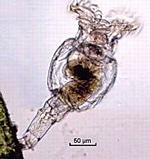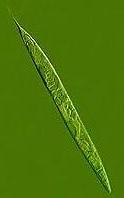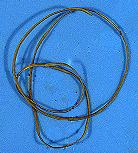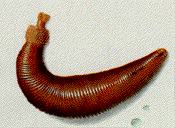
(rotifer) |

(nematode worm) |
ASCHELMINTHES
|

(nematomorph worm) |

(priapulid worm) |

(rotifer) |

(nematode worm) |
ASCHELMINTHES
|

(nematomorph worm) |

(priapulid worm) |
===3=============== Rotifera (rotifers= "wheel bearers")
|====2========|
<<==1===| ===4=============== Acanthocephala (spiny headed worms)
|
| =============6=============== Gastrotricha (gastrotrichs, hairy-belly worms)
| |
=5==| ===9=============== Nematoda (round worms)
| ===8==|
| | ==10=============== Nematomorpha (horsehair worms)
| |
=7==| ==12=============== Priapula (penis worms)
| |
==11==| ===14======== Kinorhyncha (spiny-snout propelled worms)
==13==|
===15======== Loricifera (corset-bearer worms)
Back to Zool 250 version of tree for animal phyla or Protostomia.
|
b) pseudocoelom c) bilaterally asymmetrical, determinate cleavage d) mesoderm from blastopore rim e) direct development without ciliated primary larva f) protonephridia** b) sperm structure with anterior flagella b) one ventral nerve cord b) apical proboscis with intracellular hooks c) two lateral nerve cords b) radial pharynx c) tripartite epipharyngeal brain b) pseudocoelom lost c) two lateral nerve cords b) cuticle molted c) introvert with cuticular spines, teeth or scalids |
b) protonephridia lost c) circular trunk muscles lost d) non-ciliated sperm b) four nerve cords (dorsal, ventral, 2 lateral) b) no amphids c) one ventral nerve cord b) rings of scalids on introvert c) chitinous cuticle d) one ventral nerve cord b) circular trunk muscles lost b) tri-radiate, myo-epithelial sucking pharynx |